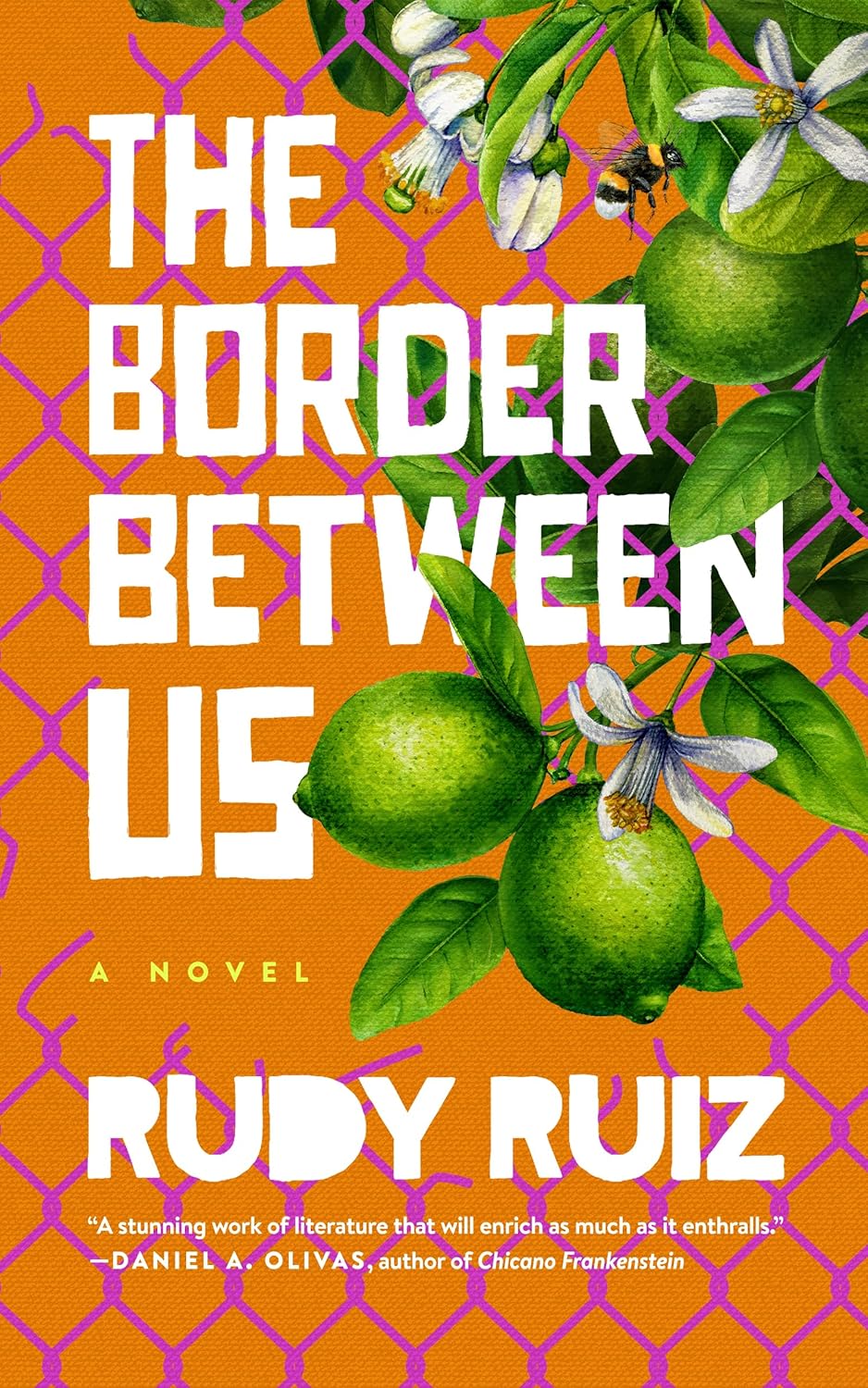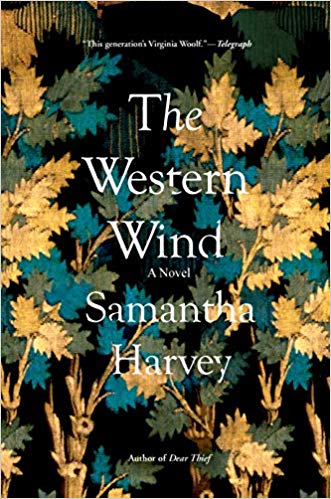The Border Between Us: A Novel
- By Rudy Ruiz
- Blackstone Publishing
- 256 pp.
- Reviewed by Bárbara Mujica
- October 7, 2024
A culture-straddling teen struggles to understand who he is.

Ramón López grows up in a section of Brownsville, Texas, where nearly everyone has roots on both sides of the border. His father, Joe, owns a tire-recapping plant that provides him with enough income to make mortgage payments on his modest house, care for his disabled son, Rubén, and keep Ramón in St. Mary’s Catholic school. Joe wants to ensure that Ramón not only receives a solid education but also remains untainted by the materialistic values that permeate American society.
However, Ramón soon learns that the nuns are as greedy as everyone else, and Mr. Aranda, the rich father of one of his friends, is not a brilliant entrepreneur to be admired but a common drug dealer. “Life on the border was truly mystifying,” Ramón comments. “It was hard, at times, to tell the difference between good and bad, failure and success, life and death, Mexican and American, dreams and delusions, especially when the thin dividing line often blurred and twisted in unexpected ways.”
Anxious to improve his family’s condition, Joe contrives a plan with his brother Bobby to expand his business. But then Bobby embezzles all of Joe’s savings and skips town. Now penniless thanks to the perfidy of his own brother, Joe loses his house and is no longer able to pay for his son's tuition at a private school.
Desperate, Joe decides to move the family back to Matamoros, on the Mexican side of the border, where his mother-in-law lives. There, he owns a small plot of land, and the family will be able to live more cheaply, he thinks, until he can regain his bearings.
Ramón balks. “We’re American,” he tells his father.
“We’re Mexican-American,” Joe answers. “We’re both. We can live here. We can live there. It doesn’t change who we are. What matters is that we provide for ourselves and that I can put a roof over our heads.”
In the end, Ramón feels too American to make the move. He urges his parents to allow him to stay in Brownsville with his paternal grandmother and to attend public high school. This creates a “border” between Ramón and his father, who sees his son turning away from the traditional ways. Nevertheless, he consents to Ramón’s plan.
In Matamoros, Joe launches a new business: exporting limes from Mexico to the United States. Unfortunately, he fails to obtain the proper permits. By the time he’s able to get his truckloads of fruit across the border, most of it is rotten. Luckily, Ramón’s mother and grandmother salvage whatever is still edible to bake pies, thereby creating a new catering business.
Throughout The Border Between Us, Ramón notes that it’s the women who, thanks to hard work and practical decisions, turn out to be the successful entrepreneurs. In contrast, he sees his father making the same mistakes over and over again — failing to think his schemes through and misplacing his trust.
At school, Ramón is drawn into a wild, restless crowd more interested in fast cars and drugs than academic pursuits. What saves him is his artistic talent. An astute guidance counselor sees his sketches and introduces him to the art teacher, Mrs. Martínez, who takes him under her wing. Through art, Ramón learns to express the complexity of his feelings — his love and compassion for his father, his disillusionment with his father’s schemes, and his sense of the barrier between them.
Ramón’s success in school art competitions brings him into contact with another promising art student, Julia Guerrero, whose wealthy father is, like Mr. Aranda, a drug dealer. Julia dreams of studying in New York, but those dreams are shattered by her boyfriend’s reckless driving. Once again, Ramón sees his father’s warnings about the fast lives of pampered teens validated.
Eventually, Ramón himself wins a scholarship to study art in New York. At first, his ability to combine traditional American and Mexican symbols, such as the Statue of Liberty and the Virgin of Guadalupe, earns him praise, but when his career takes a negative turn, he finds himself destitute in a strange city, without the family support he has come to cherish.
Once back in Brownsville, Ramón realizes that his father was right all along. He can be both fully American and fully Mexican, with one foot on either side of a border that was never rigid. It has always been permeable. Coming to terms with his own identity means learning to embrace both cultures and profiting from the best of each to produce something solid and beautiful — whether that means rebuilding Joe’s business or inventing a new kind of painting.
In some ways, Ramón is reminiscent of Demon Copperhead, the protagonist of Barbara Kingsolver’s eponymous novel. Like Ramón, Demon would’ve gotten lost at his large public high school if an adult hadn’t noticed his skill at drawing. Yet Demon, a boy growing up an orphan in an almost all-white area of rural Virginia, lacks family moorings, while Ramón’s loving though dysfunctional clan keeps him grounded. And whereas Demon succumbs to a drug culture that nearly destroys him, Ramón extricates himself.
The comparison serves to highlight one of the important points author Rudy Ruiz makes in his book: Family anchors the individual. Ultimately, the moral compass provided by a responsible adult is more significant than race or ethnicity in enabling a young person to make appropriate choices.
In spite of its sometimes belabored writing, The Border Between Us effectively captures the conundrum of countless denizens of the borderlands, whose sense of dual identity can lead to confusion and insecurity. But the novel actually speaks to a much wider audience: the millions of Americans who are the product of multiple cultural influences and feel torn among them. Ruiz helps us appreciate the great gift that our manifold heritages truly are. He has written a sensitive novel that addresses many issues facing today’s teens — from cultural disorientation to cultural identity, from material poverty to excessive materialism, from addiction to negligent parents. It’s a provocative book and well worth the read.
Bárbara Mujica is a novelist, essayist, short-story writer, and critic. Her latest novel, Miss del Río, based on the life of Mexican movie star Dolores del Río, was named one of the best books of 2022 by Library Journal and one of the five best recent historical novels by the Washington Post. Mujica’s novel Frida, based on the tumultuous relationship between Frida Kahlo and Diego Rivera, was an international bestseller published in 18 languages. Sister Teresa, based on the life of the Spanish saint Teresa de Avila, was adapted for the stage by the Actors Studio in Los Angeles. Her novel I Am Venus revolves around the identity of the mysterious model for the Rokeby Venus, the only extant female nude by Spanish painter Diego Velázquez. Mujica’s story collections are Imagining Iraq, an Amazon bestseller, Far from My Mother’s Home, and Sanchez across the Street. Her Collateral Damage: Women Write about War is a compendium of writings on the trauma of war. Mujica has won numerous prizes for her writing, including the E.L. Doctorow International Fiction Competition, the Pangolin Prize, and the Pioneer Prize from Dialogue on Diversity. She is a two-time Pushcart nominee. She is also a professor emerita at Georgetown University who specializes in early modern Spain and is the author of numerous books and articles on Spanish theater, mysticism, the counterreformation, and women’s writing. In 2022, her book Women Religious and Epistolary Exchange in the Carmelite Reform won the GEMELA Prize for best book of the year on early modern Hispanic women. Her English translation of Vicente Rodríguez’s nearly 1,000-page tome, Saint John of the Cross: A Biography, is due out early next year.

